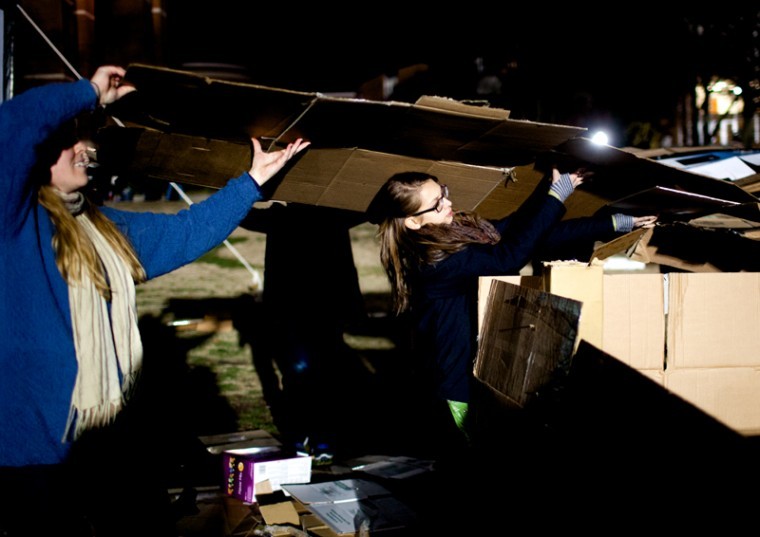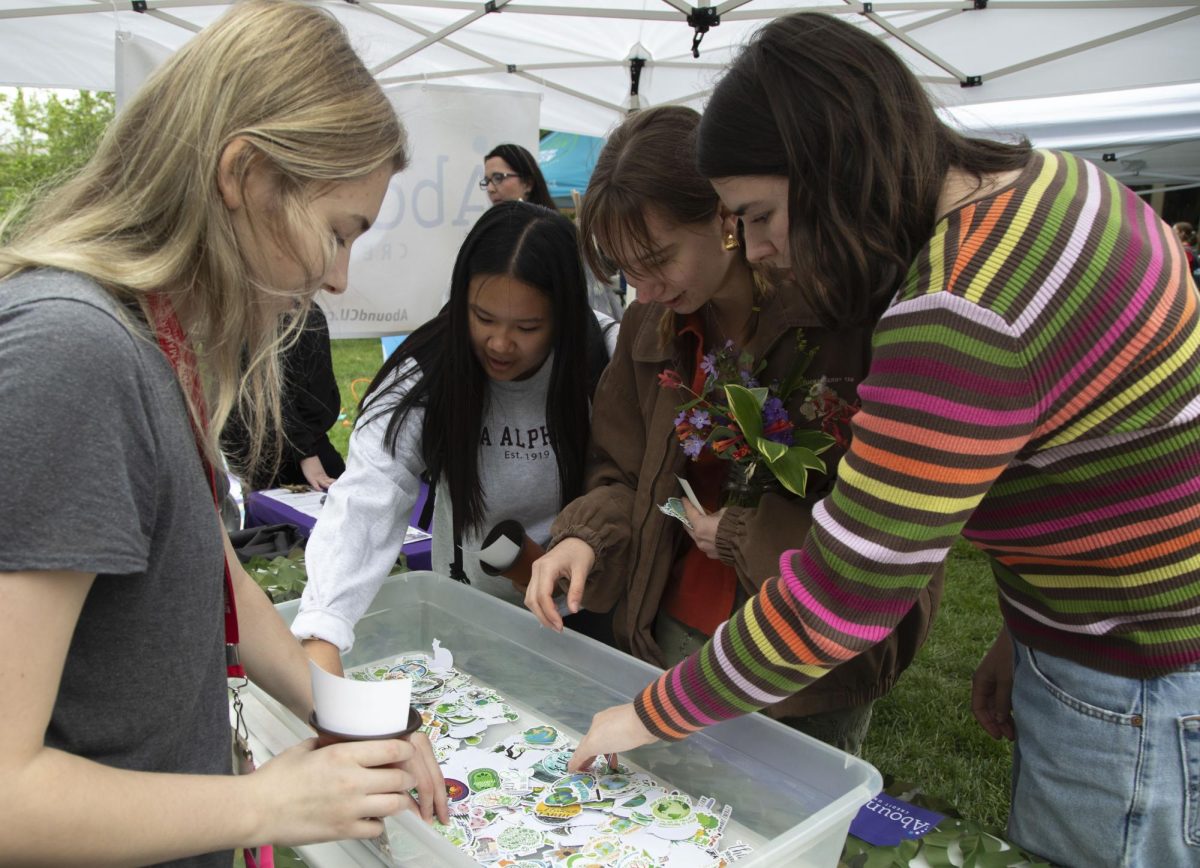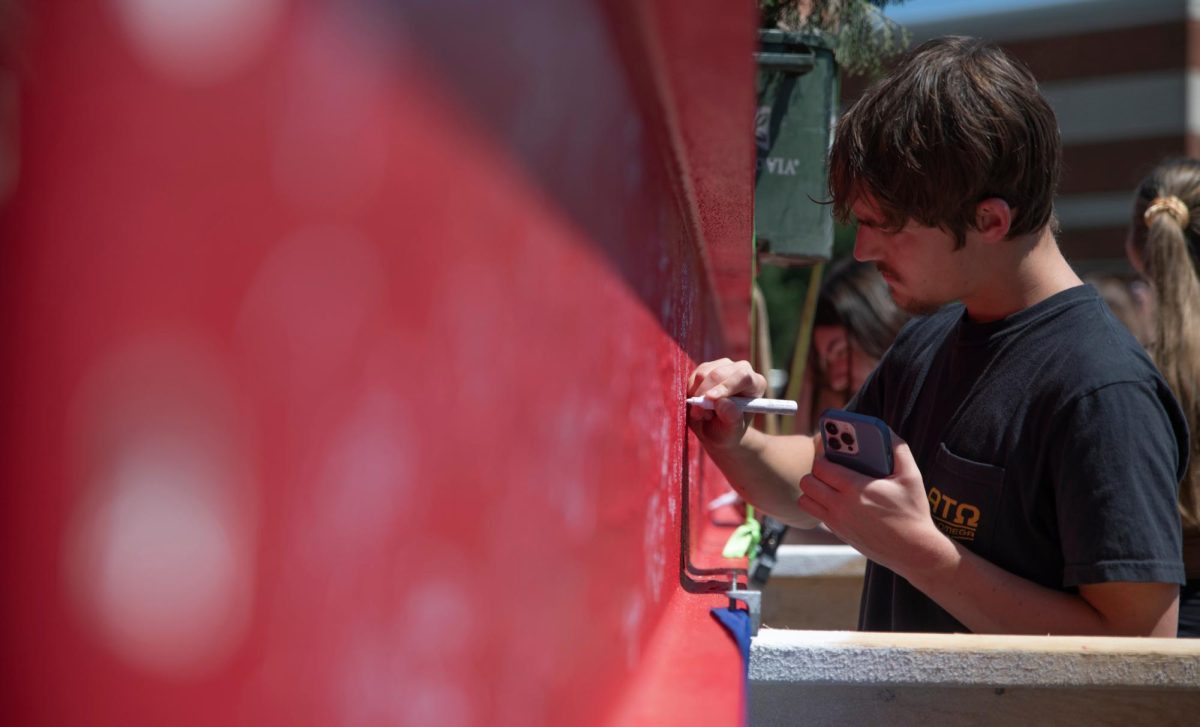Changes to Shantytown help educate students
November 16, 2012
Paducah junior Mary Riley spent Wednesday night learning she can’t build a house.
“I wasn’t prepared for this, so I don’t know how other people do it at all,” she said.
Riley and her sisters from Omega Phi Alpha sorority were paired with students from Pearce Ford Tower during the 22nd annual Shantytown, an event that simulates homelessness by challenging students to build shanties with cardboard boxes.
Housing and Residence Life sponsored Shantytown, and groups including Habitat for Humanity, Feel Good, and HRL’s Social Justice Committee helped plan the event.
Shantytown is usually held in early October, but Nikki Eversole, assistant residence hall director for McCormack Hall, said the date was moved this year to coincide with Hunger and Homelessness Awareness week.
Eversole said because it was moved to later in the semester, the weather was too cold for students to stay overnight in their shanties.
This year’s event featured several changes, including new rules for building the shanties.
Students weren’t allowed to bring their own cardboard like they had in the past, Eversole said.
“We felt like by making that change, it was more beneficial to the student in the education aspect, making them work with what they have because sometimes homeless people don’t even have cardboard boxes,” she said.
Zuri Thurman, coordinator for Rhodes Harlin Hall, said students were randomly placed into neighborhoods to build the shanties, instead of with the group they came with, to help create unity among the groups.
Once the shanties were finished, they were judged on durability and other factors.
Next was a hunger banquet, where students were given a numbered ticket that corresponded to a certain amount of food. Some tickets led to smaller amounts of food being given to more students to illustrate the number of people who survive on such a small amount, Eversole said.
“Students don’t know that going in, so it’s another one of those learning experiences,” she said.
WKU’s Habitat for Humanity helped organize a march for poverty and a candlelight vigil for those who live and die in poverty.
Tell City, Ind., junior Mariah Stiles, president of Habitat for Humanity, said Shantytown raises awareness about poverty and substandard housing.
“Students need to be aware it’s not just living under a bridge in raggedy clothes,” Stiles said. “It’s people that they see everyday walking on campus.”
Hackensack, N.J., freshman Matt Liso said Shantytown helped him step into someone else’s shoes and learn about homelessness.
“It’s not all fun and games,” Liso said. “Some people really have to work hard to just get by.”
Eversole said she hopes students who came to Shantytown will look at what they have and be thankful for it.
“A lot of us take for granted that we’re so privileged, and we don’t realize that there are even a number of homeless people here in Bowling Green,” she said.




















![Students cheer for Senator at Large Jaden Marshall after being announced as the Intercultural Student Engagement Center Senator for the 24th Senate on Wednesday, April 17 in the Senate Chamber in DSU. Ive done everything in my power, Ive said it 100 times, to be for the students, Marshall said. So, not only to win, but to hear that reaction for me by the other students is just something that shows people actually care about me [and] really support me.](https://wkuherald.com/wp-content/uploads/2024/04/jadenmarshall-600x422.jpg)





